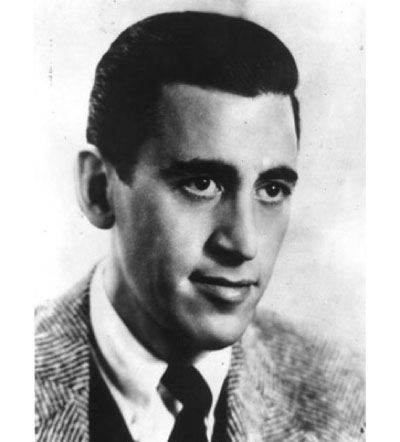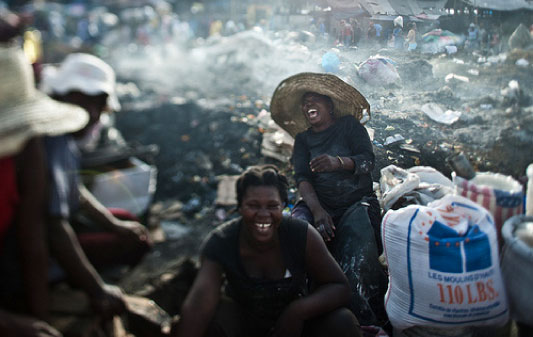While the world’s attention has been focused upon Canada for the Winter Olympics, another northerly site worth noting has continued to be widely ignored. Far from gold medal glory, the oil sands in northern Alberta continue to be dug up, mined, steamed, and refined in what many have claimed to be the most environmentally damaging process on earth.
The “tar sands”, as they’re most widely known, refer to bitumen (a dense, degraded form of oil) deposits that lie in the earth’s uppermost layers, heavily mixed together with sand. This form of petroleum is difficult to mine and even more difficult to refine into a usable form. The sands are such an expensive source of oil that it wasn’t until the 1990s that technology had advanced enough for the project to be economically viable. But with the reality of peak oil looming, the sands are now mined in earnest.
One million barrels are currently culled each day from the sands (of which 80 percent goes to the US) and each barrel requires cutting down forest, the removal of two tons of earth to reach the sands, and the removal of two tons of the sand itself. The whole process unleashes five times more greenhouse gases into the atmosphere than normal oil mining. Not only that, but barrels of water are used in the refining process to steam the bitumen from the sand, and the contaminated water left over is dumped into tailings ponds, which, as of a year ago, covered around 50 square miles.
(more…)


Two young American filmmakers traveled and filmed in rural Haiti for five weeks before the earthquake, and they’ve now decided to release the resulting 40-minute documentary to view for free over the Internet. In doing so, they hope to inform the world about the deep, systemic poverty that existed in rural Haiti even before the devastating earthquake, as well as the community spirit and hope that persisted in spite of it. The filmmakers’ synopsis describes the film as such:
The first interview introduces Sandelwi, a farmer and a mystic, who is riding on top of a bus that is speeding around the treacherous curves of the mountainous road to Port-au-Prince, mindless of the precipitous drop to the valley below. ‘When you’re in Haiti, I consider you Haitian,’ he says. ‘It’s up to us, we have to put our heads together to do development.’ … The Road to Fondwa is not a one-way street, but rather a conduit between two very different, yet intricately connected nations.
The film’s exploration of America’s role in creating the perilous political and economic situation in Haiti before the earthquake serves as a potent reminder of our continuous responsibility to help. Head over to the film’s website, to view The Road to Fondwa and/or purchase the DVD (all proceeds go to Partners in Health). And as always we urge you to continue to help the Haiti recovery by donating to reputable relief organizations like Oxfam and Doctors Without Borders.


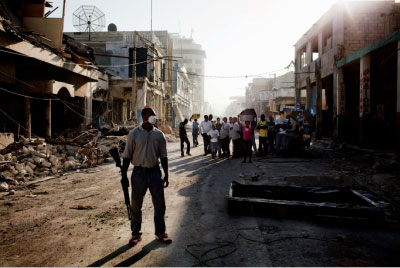
Three weeks since the earthquake devastated Port-au-Prince, Haiti, the suffering continues. French photojournalist Frédéric Sautereau spent a week in Port-au-Prince documenting the situation. Internationally recognized for his work dealing with the dual notions of border and divide, Sautereau has reported on places in turmoil – political, economic, or otherwise – including Kosovo, Gaza, Burma, North-Kivu, Hurricane Katrina, and 9/11. Shortly after returning from Haiti, PLANET° was fortunate enough to speak with Sautereau about his poignant photographs and just how far Haiti is from a full recovery.
As with our previous coverage of the Haiti Earthquake, we urge you to donate to Oxfam or Doctors Without Borders. Please bear in mind that with Red Cross, ninety cents of every dollar goes to administrative expenses and only ten cents reach the people.
How do you view your role as a photojournalist in the wake of the disaster in Haiti?
I am a journalist, so my role is to present the images I see, what I perceive and understand from the situation. As for what’s happened in Haiti, it means trying my best to convey the situation of distress and chaos, which now rules in this region, and also for the purpose of representing the deaths. I try to do this with intellectual honesty.
(more…)


Charlotte Gainsbourg was nervous. She had never toured before, and no one knew what to expect as she took to the stage last weekend, at what must have been the most crowded concert to date at the Hiro Ballroom. But as the show went on, Gainsbourg’s confidence grew, aided by cheers coming from the crowd, in both French and English. On IRM, Gainsbourg’s new album written and produced by Beck, her ethereal voice wafts and wanes over eerie melodies reminiscent of Beck’s own Sea Change. It’s no surprise then that Gainsbourg’s sold-out appearances at Manhattan’s Hiro Ballroom and Brooklyn’s Bell House drew such attention. She’s one of the most interesting artists working today — giving a heart-stopping performance in Lars von Trier’s film Antichrist and creating one of the most beautiful albums released in the last year. And to top it all off, she is simply one of the nicest, most gracious people we have ever interviewed.


I never met J.D. Salinger.
I don’t really know a damn thing about him that would give me the right to stand up and eulogize the man and I’m okay with that. All I really know about Salinger is what I have read from him…. Or more accurately, all I really know about him is what I have felt about what I have read from him. And what I have felt leaves me now with a strangely beautiful sense of loss and gratitude in the wake of his passing.
I can’t pay homage to the man without feeling a bit “phony” but I can honor the literary evidence, that part of the man’s character and soul that lives with us still, without any experience of the vessel it was originally packaged in or the personality that he projected. And as I celebrate the love I have of the love he had for his brilliant, lonely characters, I also respect the fact that he had absolutely no desire whatsoever to know what I think about his work or what it meant to me growing up.
I’m not saying I wouldn’t have liked to meet him. I’m a writer for Christ’s sake! I grew up in my dad’s bookstore surrounded by Salinger’s work and his legendary mythos, of course I wanted to meet him, but by the time I was old enough to read his work and understand it (circa 1977) it was already a well-established fact that if J.D. had anything to do with it, I would never come within a hundred miles of him. Nor would anyone who came along with another heartfelt profession of commiseration with Holden Caulfield, or yet another well-meaning inquiry about “the real Glass family”.
(more…)



![]()
![]()
Howard Zinn was one of the great humanitarians of the 20th Century. His work had a profound influence on me personally and was a factor in shaping this magazine when I was formulating it in the late 1990s. We consulted with him for our Peace Issue in 2003, and wrote a piece on him in our Voices section in 2008. Also, click here for a link to the New York Times obituary. I haven’t always agreed with all his views, but his central ideas — that history should be told from the viewpoint of those its events have most affected, and that society’s duty is to organize our resources to provide the greatest good for the greatest number of people — are important principles to keep in mind as we hurtle deeper into this Global Century. May his vision endure, and may he rest in peace.



Since the Bergen-reared, Berlin-based Annie Lilia Berge Strand released her breakout album, Anniemal, in 2004 the pop music landscape has changed dramatically, particularly with respect to genre-straddling female artists with one foot firmly entrenched in indie waters and the other dipped in pop territory. Her second full-length album, Don’t Stop — long-delayed and substantially reworked after creative differences with Island Records — arrived in late 2009, a post-Ladyhawke, post-Little Boots, post-Lykke Li moment. But Don’t Stop differentiates Annie from this pack of indie-electro darlings for whom she opened the doors. The album is a mixed bag in the best possible sense. Its songs run the gamut, from the dance confection “My Love is Better” to the moody, melodic, French-pop-inflected “Marie Cherie”. And Annie has chosen a diverse set of collaborators, including Alex Kapranos of Franz Ferdinand and producers Xenomania, who have worked with Kylie Minogue, Saint Etienne and the Pet Shop Boys, reflecting her repudiation of a sound that is one note.
PLANET caught up with Annie as she readied herself for a year of touring to support Don’t Stop as well as continuing her regular DJ gigs at home and abroad.
Audio clip: Adobe Flash Player (version 9 or above) is required to play this audio clip. Download the latest version here. You also need to have JavaScript enabled in your browser.



In light of the earthquake and ensuing tragedy in Port-au-Prince, Haiti yesterday, we’d like to encourage our readers to help in any way they are able. Here are links to two international aid organizations that have longstanding and effective aid efforts on the ground there, Oxfam and Doctors Without Borders. We just made a donation on behalf of PLANET through Oxfam and hope many of you will, too, whether through these organizations or others you support. Haiti is only 100 miles from South Florida and has been the most neglected country in our part of the world. The magnitude of the death toll, estimated to be over 100,000, has much to do with poor housing and infrastructure throughout the city and countryside. The people there will simply not be able to cope, nor the country recover, without help from the rest of the world.
Photographer Jeff Antebi, whose work on Juarez we published earlier this week, made many trips to Haiti in the last several months photographing the people there, who, despite crushing poverty – the worst in the Western Hemisphere – maintain an irrepressible spirit. We wanted to include these images to put a human face on the tragedy as well as to show the innately beautiful spirit of the people. Obviously these images are in stark contrast to the scenes we have been seeing out of Haiti for the last day. The safety of the people in these images, photographed a few short months ago, is not known, but certainly all of them have suffered and are still suffering. Please help the people of Haiti and help us spread the word.
(more…)


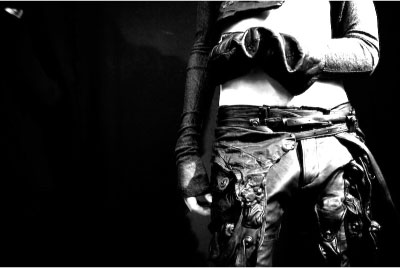
Black is the most misunderstood color. In fashion, black has been co-opted by two groups of people: the Balmain-sporting fashionistas who think that chic is a value in itself, and the misguided (by Hot Topic) teenagers who worship Satan and Marilyn Manson in the safety of their suburban homes. But black is not the color of chic or nihilism. For Tatsuro Horikawa, the young Japanese designer behind the cult clothing label Julius, black is the color of depth. It is not there to promote aggression and destruction – the pop version of black – but to display his awareness of the world that is subject to aggressive and destructive forces. And, as unexpected as it might sound, it is also a color of hope. “Black is the color of complete and utter grief,” says Horikawa’s manifesto, “and redemption through atonement.” This view is a kind of existentialism – the idea that we alone are responsible for our fate and carry the full burden of responsibility for our actions, and thus must bear witness to the world’s evil. This view can be easily traced in Horikawa’s uncompromising designs – the oiled leather jackets, heavy jeans with multiple pockets, and drapey, shredded tops. Their purposeful ruin is the reflection of our imperfection. But these clothes are also indestructible, like the human spirit.
Horikawa started out as a graphic designer in the late ’90s, forming a Tokyo-based art collective that produced multimedia installations. He considers the clothes to be the project’s extension.
(more…)


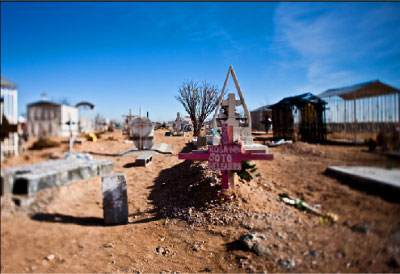
When I mentioned I was going to spend Christmas photographing Juárez, people reacted as if I was planning a trip to Somalia.
They were not that far off.
How out of control is the city of Juárez? Compare the killings there to the war in Afghanistan. In Juárez in 2009 — a single city with only 1.5 million people — almost 2,600 people have been murdered. The number of civilians killed in 2009 in the war in Afghanistan, a nation of 28 million people, was about 2038.
In the last two years, upwards of 4,000 people have been murdered in Juárez, compared to about thirty homicides across the U.S. border in El Paso.
Juárez is the deadliest city in the world for a simple reason: for years, several powerful drug cartels have been fighting over control of the city. The region represents an extremely profitable route into the U.S., where consumers spend enormous sums of money to get high. On average, ten people are murdered each day. In September alone, 476 people were killed, most of them gunned down in the street in broad daylight.
Juárez has become synonymous with murder, but the murders here are extraordinary brutal.
(more…)







 Facebook
Facebook Permalink
Permalink Digg
Digg Reddit
Reddit LinkedIn
LinkedIn StumbleUpon
StumbleUpon Tumblr
Tumblr